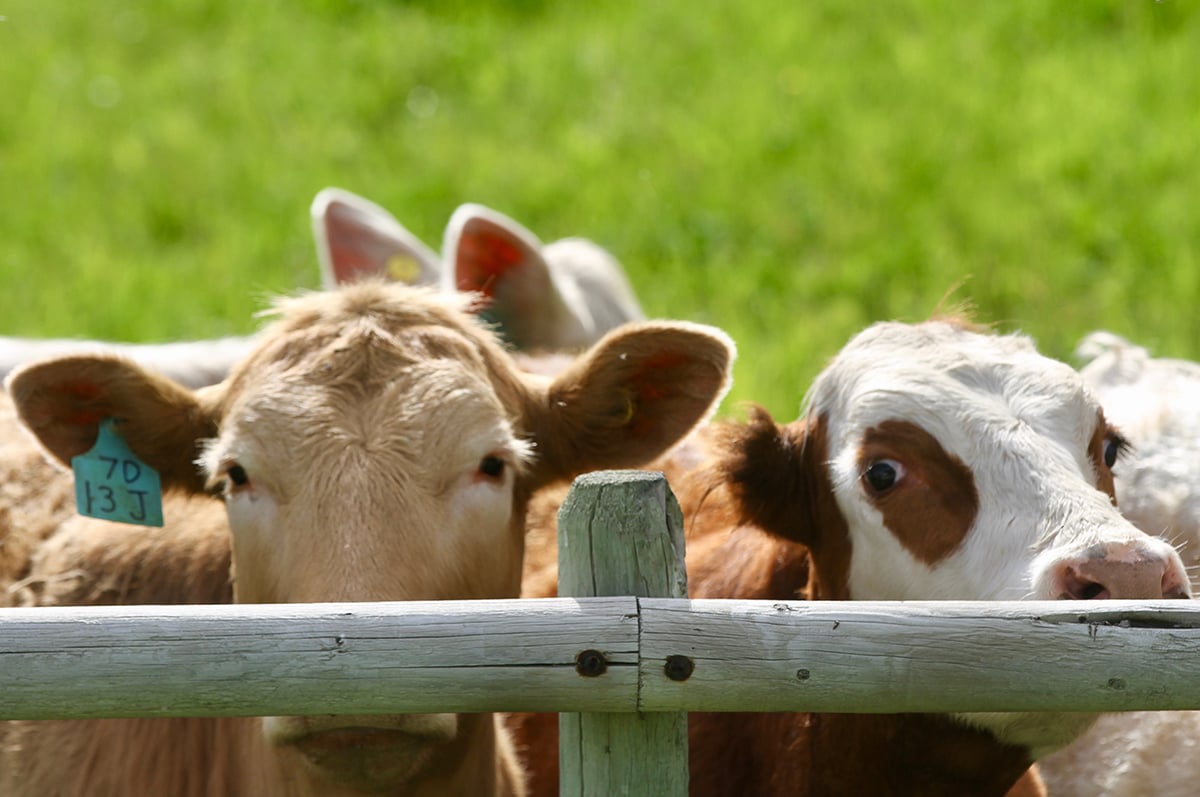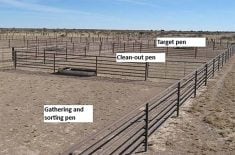DIDSBURY, Alta. – Bobbie-Gayle Hosegood may be the embodiment of the modern rancher.
Young, enthusiastic and competitive, she has been fascinated with cattle since she was a child. A purebred Simmental breeder, she owns Yellow Rose Cattle Co. at Didsbury, in central Alberta, with help from her parents Roger and Linda.
She bought her first Simmental cow when she was seven by pooling her savings and her birthday money. Her reason for picking Simmental?
“I liked them because of their great, big ears,” she said.
Read Also

Feeder market consolidates at historic highs
For the week ending Sept. 6, Western Canadian feeder cattle markets were relatively unchanged compared to seven days earlier.
She started 4-H when she was nine and became immersed in beef projects for 11 years. She was fully involved with Simmentals when she was 15 and served as breed princess and queen.
While she liked the big, beefy cattle, the people drew her closer to the breed. She was treated as a serious breeder and mentored by some of the best in the business.
“People make or break a business. People took me by the hand and helped me all the way through it,” she said.
Her father taught her selection techniques, which she combined with her own instincts. Her family farm is nearly a century old and for most of that time there have been cattle on the Hosegood place.
Until 1999, her father Roger had a herd of 200 commercial cows that the family dispersed to make way for an export timothy hay business.
“Dad loves these cattle and he is the biggest supporter of anybody to my program,” she said.
She raises black and red factor Simmentals as well as a small contingent of fullbloods. The red and black factor animals may have some white on their faces or bellies, while others like her prize winning herd sire, Red Dog, are completely red.
Hosegood considers adding colour to the herd a form of diversification that offers a wider range of cattle to commercial and purebred cattle producers. She makes sure her coloured cattle retain their Simmental characteristics so there is no mistaking them for other breeds. She imported her first black cow from the United States.
“When I brought her up in 1995, I had lied to Dad and told him she was red,” she said. “It was the first black that was ever on the place.”
At 28 years old, Hosegood is developing a reputation for selling seedstock to local commercial customers as well as purebred operators.
“It’s a treat to sell to commercial people who are more exacting in their demands,” she said. She has a cow herd of 60 and has developed a strong female line. But she really shines in the show ring.
“I’ve taken the show ring aspect to market my cattle. That is my promotion,” she said. “It is a very expensive way of promoting your cattle, but fortunately for me, it’s paid off wonderfully.”
Hosegood’s first major open show was in 1992 when she had the grand champion female at the Calgary Stampede. That same cow was named supreme champion female in 1993, the first Simmental to win the award.
The cow became one of her foundation females.
A Hosegood animal won the supreme champion bull at the 2001 Stampede. Named Big Red 7J, the big three-year-old retires from the show circuit after the Camrose bull congress next year. She won that bull as a nine-month-old calf at a Simmental event at Farmfair in Edmonton.
Hosegood has already sold his semen and some of his offspring are for sale this fall.
“His calves are better than him. He’s exceeded all our expectations and more,” she said.
Hosegood loves to show cattle and used to enter as many as 15 events a year. In 1998, she was sidelined by an accident and considered leaving the business.
The following year, she scaled back, showing several times a year at major shows including Farmfair, the Stampede and Canadian Western Agribition, as well as the Mountainview County Fair at Olds, Alta.
Winning the Stampede supreme champion over16 breeds was a major coup. A panel of seven judges representing a cross-section of breeds scrutinizes all grand champions bulls and females from the Stampede stock show.
“You are representing your breed and you get to show everybody what you are doing at this point in time,” she said. “I’m proud of the breed, I’m proud of our direction and our place in the beef industry.”















